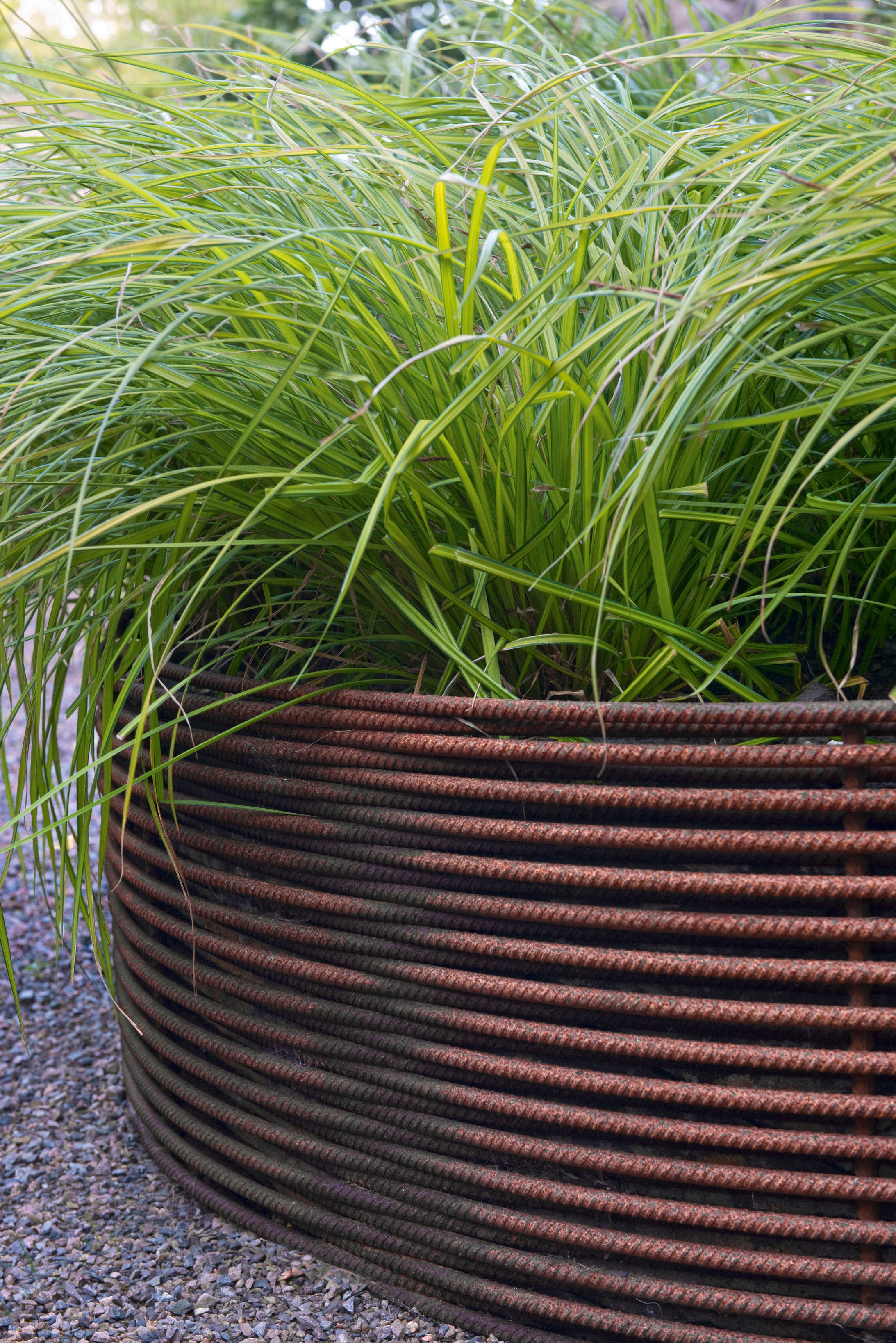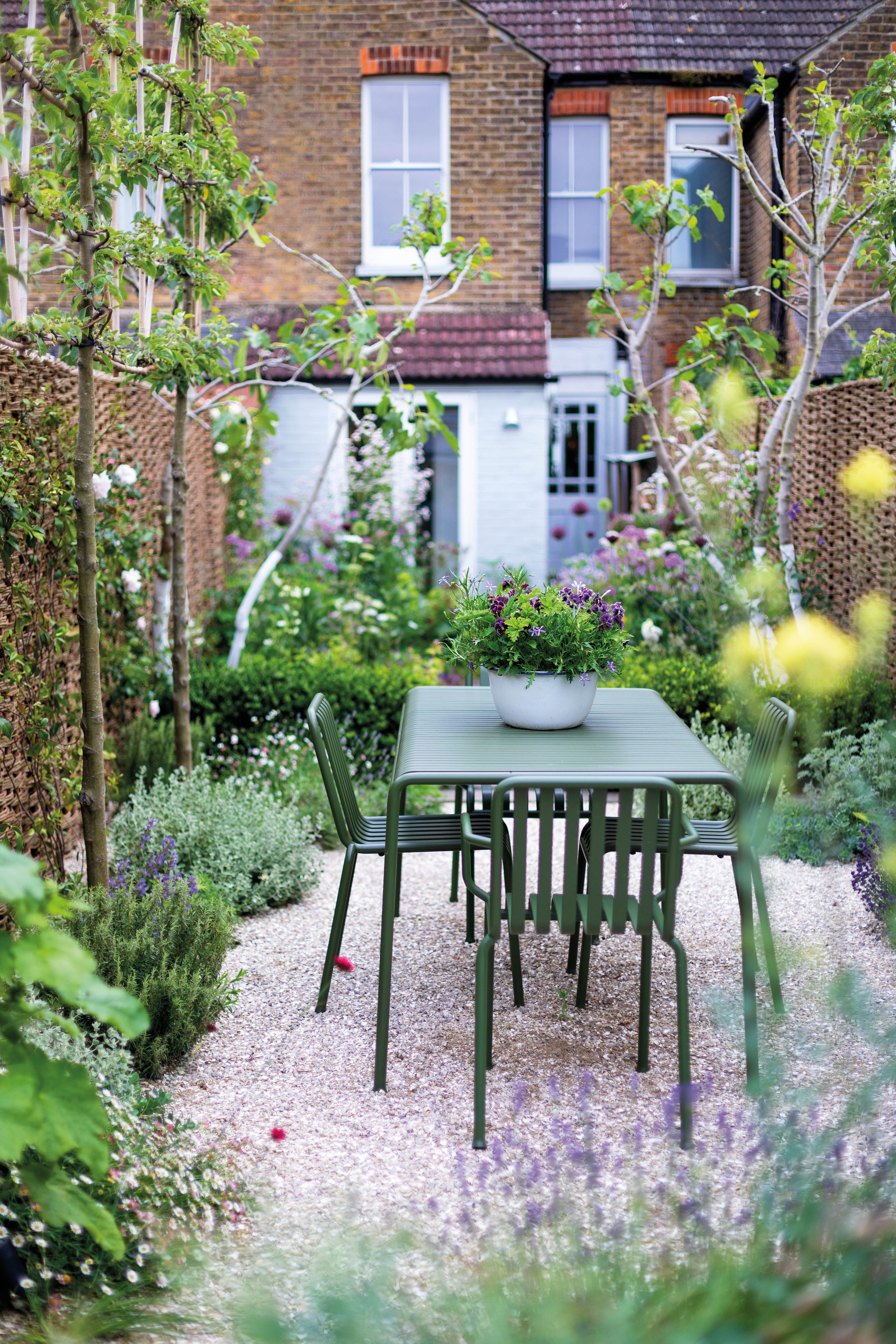
Tips for small gardens
Here are two small gardens making the most of limited space
Not everyone has huge outside space. Here are two examples of designers turning their smaller gardens into little havens. Designers Harriet Farlam and Ben Chandler pack a lot into a tiny space fit for entertaining, dining, relaxing and working, while Carolyn Grohmann's angled garden in Edinburgh has been filled with flowers and edibles to make the most of its awkward shape. Words by Agnes Stevenson and Francine Raymond.

Carolyn Grohmann's city walled garden is in Edinburgh and has loam with added topsoil. A west facing aspect measuring 7m x 20m its special features include petal-shaped raised beds, curved wall with scorched oak seating and pink Cedec gravel paths.
Get the look
- Have several focal points and ‘stopping-off’ points throughout the garden, avoiding a straight line to the back wall.
- Use materials that work with the existing structure. The rust tones of the bowl and raised beds, and the pink of the Cedec gravel, can all be found in the random rubble walls that surround the garden.
- Texture is equally as important as colour. Putting different textures together can emphasise different finishes and adds another layer of interest.
- Make a feature of anything you can’t hide, such as compost bins shaped like beehives and an unashamedly traditional garden shed.
Showing item 1 of 7












Harriet Farlam and Ben Chandler's town garden is loam on a bed of yellow Kent clay. In Whitstable in Kent, the space is east facing and is 3.3m x 22m.
Get the look
- Use different levels. This garden has an ormamental sunken section stepping up to a raised dining area.
- A change of flooring material can herald a shift in use: here a bleached oak walkway leads to a softer cockleshell and limestone base in the dining area.
- Alter vertical elements. The 3.2m-tall pleached crab apple panels add privacy to the dining area and highlight the seasons with blossom, fruits and coloured foliage. The 1.8m-high willow fence is half a metre higher around the working area.
- Hedges are the most obvious solution to dividing a garden, but here informal chestnut poles hide cooking facilities.
- Use colour and texture in planting to highlight a change of mood and function, or act as a barrier. The fig trees in this garden create an arch, and the fennel, hollyhocks and thalictrum all help to form a screen.
Showing item 1 of 5







Niwaki bundle worth £57 when you subscribe
Subscribe to Gardens Illustrated magazine and claim your Niwaki bundle worth £57
*UK only

Container Gardening Special Edition
The Gardens Illustrated Guide to Container Gardening.
In this special edition, discover colourful flower combinations and seasonal planting schemes for pots designed by leading plantspeople, and essential know-how for container gardening success. Just £9.99 inc UK p&pBy entering your details, you are agreeing to our terms and conditions and privacy policy. You can unsubscribe at any time.

Gardens of the Globe
From botanical wonders in Australia to tranquil havens closer to home in Ireland, let this guide help you to discover some of the most glorious gardens around the world
By entering your details, you are agreeing to our terms and conditions and privacy policy. You can unsubscribe at any time.




